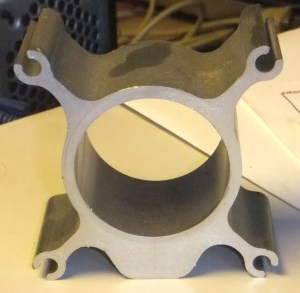Every fan of the original Star Wars trilogy knows the plight of Han Solo, who was so cruelly frozen in carbonite by Imperial forces. [erv.plecter] came into possession of a replica Solo, this time frozen in polyurethane, and set about using it as the door for a home theater setup.
Just like in the movie, there are a series of controls and lights on the side of the door, clearly intended to represent the state of the carbonite block and the smuggler trapped within. This was achieved with the use of a SAMD51 microcontroller, which controls five meters of WS2812B LED strip along with a small OLED display.
There’s also an amazing little smoke effect, built using a vape inhaler. These devices have proved popular for all kinds of theme builds and costumes, as it turns out. They’re a great way to produce a visible fog or smoke in a tiny, compact package.
[erv.plecter] was kind enough to share plenty of details on the build, including how the polyurethane cast was assembled into the door. The final result looks remarkably authentic, and would surely prove a hit at any Star Wars movie night. Just don’t spoil things by forcing everyone to sit through Revenge of the Sith. Video after the break. Continue reading “2022 Sci-Fi Contest: A Very Star Wars Door”

















